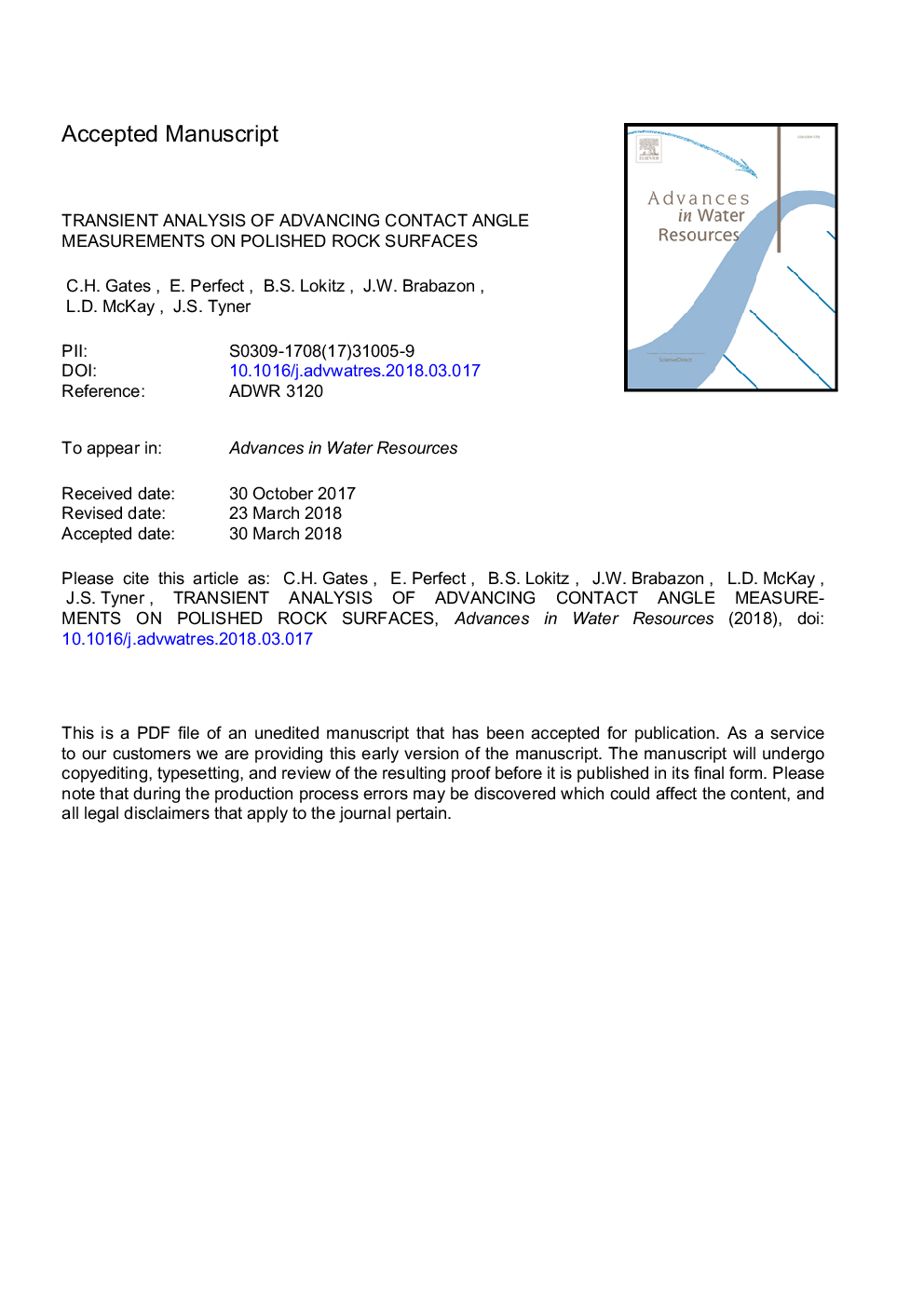| Article ID | Journal | Published Year | Pages | File Type |
|---|---|---|---|---|
| 8883252 | Advances in Water Resources | 2018 | 32 Pages |
Abstract
Contact angle measurements for gas-liquid-rock systems are important for modeling multi-phase flow and transport in the subsurface. These data are needed in applications such as the extraction of oil and gas resources, geologic sequestration of carbon dioxide, contaminant fate and transport, and aquifer recharge through the vadose zone. Contact angles are frequently measured with the sessile drop method. Previous research has largely ignored the dynamic behavior of sessile droplets on geologic materials. This study investigates the dynamic behavior of sessile water droplets on prepared rock surfaces in the presence of air. Droplet diameter and advancing contact angle were determined at 0.5â¯s intervals for â¯â¼â¯90â¯s on flat polished disks of Burlington limestone, Crossville sandstone, Mancos shale, Sierra White granite, Vermilion Bay granite, and Westerly granite using a Krüss DSA 30 Drop Shape Analyzer. The droplet diameter and advancing contact angle data sets were nonlinearly regressed against time using two different two-parameter models. The median coefficients of determination for the fits were 0.85 and 0.96, respectively. The resulting parameter estimates were used to compute the apparent equilibrium contact angle, θe, for each disk following droplet diameter stabilization. Estimates of θe ranged from 37.2° for Mancos shale to 75.6° for Burlington limestone. Analysis of variance indicated statistically significant differences in θe between the rock types at the 95% confidence level. The variability of θe on the polished rock surfaces, as quantified by the coefficient of variation (CV) for θe, varied between â¯â¼â¯3 and â¯â¼â¯9%; there were no significant differences in CV between the rock types. Neutron radiography indicated changes droplet morphology over time were due to the spontaneous imbibition of water into the rock matrix. The transient analysis employed in this study permits a more meaningful estimate of the equilibrium contact angle for rocks than taking the initial value or averaging over time as is frequently done.
Keywords
Related Topics
Physical Sciences and Engineering
Earth and Planetary Sciences
Earth-Surface Processes
Authors
C.H. Gates, E. Perfect, B.S. Lokitz, J.W. Brabazon, L.D. McKay, J.S. Tyner,
